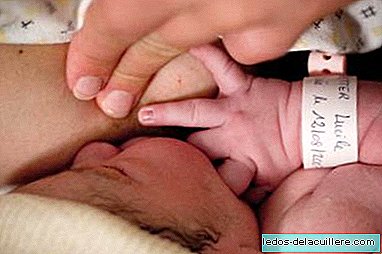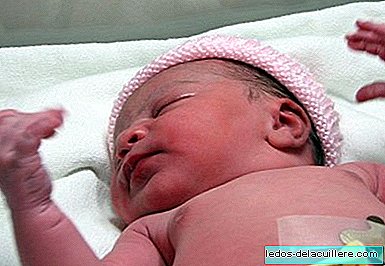
The increasing number of caesarean sections in recent years has caused a decrease in the period of breastfeeding of babies. It is evident, and scientifically endorsed by researchers from the University of Padua (Italy), that Caesarean section has a negative effect on breastfeeding.
It is one of the few studies that deal with the effects of the way of birth on the success or failure of breastfeeding, which concludes that both scheduled and emergency caesarean section are associated with a decrease in breastfeeding rates Exclusive maternal compared to vaginal delivery. That is, babies born by caesarean section they drink less breast milk.
Among the factors that influence babies born by caesarean section to be breastfed for less time, the main cause can be attributed to the impediment or difficulty that mothers who have suffered a caesarean section to breastfeed their babies in the delivery room and in the hours immediately after delivery.
To carry out the study, the data of more than 1,500 children have been analyzed according to the type of birth they have had (vaginal, emergency caesarean section and scheduled caesarean section). After a follow-up of the mother and the baby at the time of hospital discharge, at seven days, and at three and six months, the rates of breastfeeding prevalence were recorded according to the WHO criteria.
According to the results:
- The prevalence of exclusive breastfeeding in the delivery room was significantly higher after birth by vaginal delivery (71.5 percent) compared to birth by caesarean section (3.5 percent)
- There was a significant difference in the time interval between birth and first breastfeeding. In those born by caesarean section it was 10.4 hours, while in those born of vaginal births it was 3.1 hours, on average. Remember that the first hour is very important, early breastfeeding is key to the establishment of successful breastfeeding.
- No differences were found in breastfeeding rates among those born by scheduled and emergency caesarean section.
- Vaginal birth presented significantly higher exclusive breastfeeding prevalence rates than those born by scheduled caesarean section (85.95 percent versus 74.5 percent at seven days, 69.9 percent versus 55.1 percent at three months and 59 percent versus 46.6 percent at six months).
As the obstetrician Michel Odent, an expert in the subject, explains, when a cesarean delivery or an oxytocin-induced delivery occurs, a lower hormonal stimulation occurs in the milk-producing mammary glands, which favors a decrease in breastfeeding.
The research proves scientifically the negative effect of caesarean section on breastfeeding. Even so, although the circumstances have not been favorable, many women who have gone through a C-section achieve a lasting and successful breastfeeding.
Given the damage caused by this practice on breastfeeding, skin-to-skin contact and breastfeeding should be favored after a C-section, which will surely have an effect on improving breastfeeding rates.
Via | Breastfeeding
More information | Evidence in Pediatrics
In Babies and more | Skin with skin and breastfeeding after caesarean section












